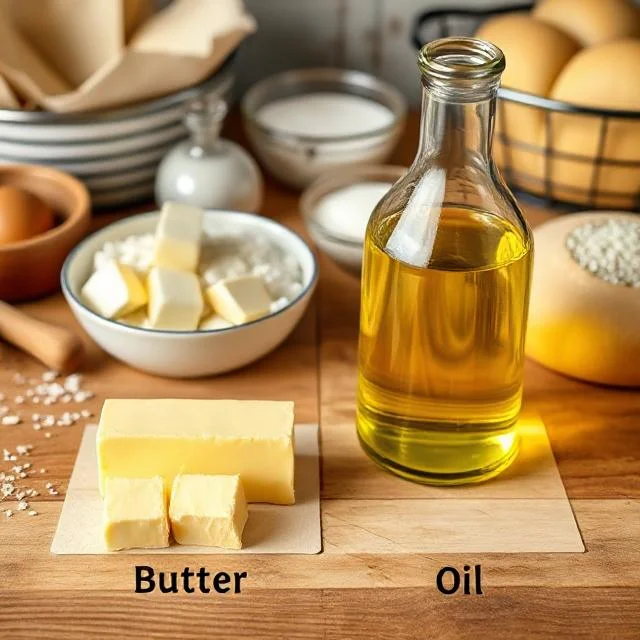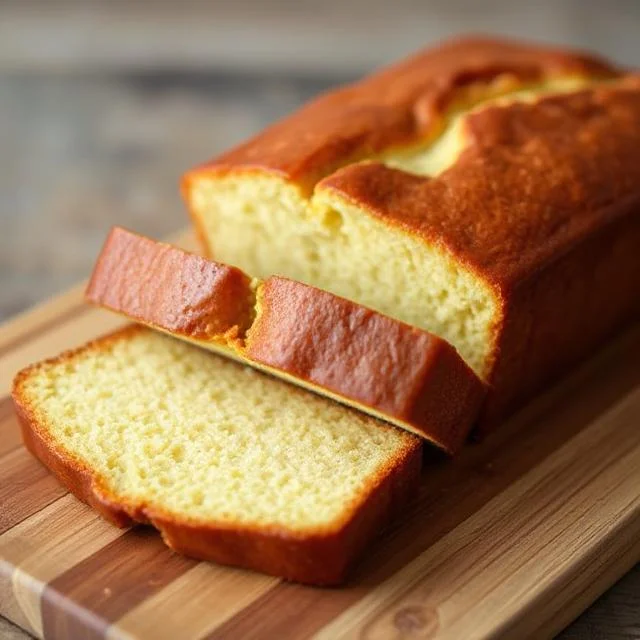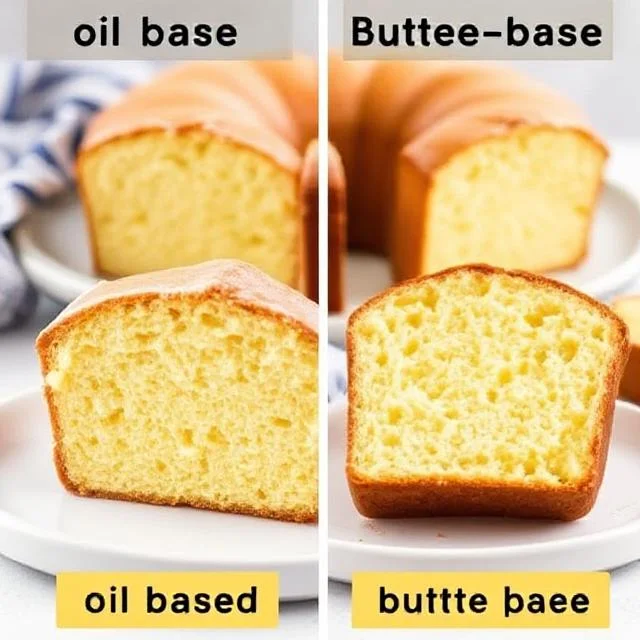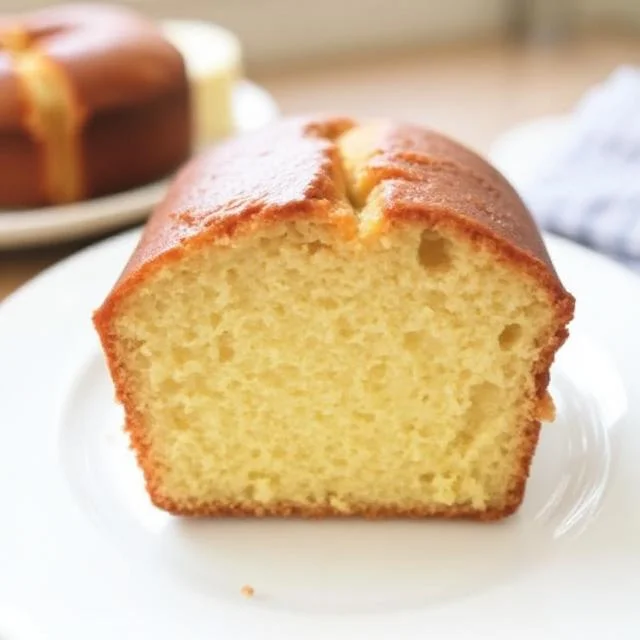Introduction
Pound cake is a classic dessert loved for its dense, buttery texture and rich flavor. But what happens when you swap butter for oil? Some bakers argue that oil makes cakes softer and moister, while others insist that butter provides an unmatched flavor. So, which is the better option for pound cake? This article will break down the differences between oil and butter in baking, exploring how each ingredient affects texture, flavor, and overall cake quality.
The Role of Fat in Pound Cake: Why It Matters
The Science Behind Fat in Baking
Fat plays a crucial role in baking, impacting both structure and moisture retention.
- Tenderizing Effect: Fat shortens gluten strands, resulting in a softer texture.
- Moisture Retention: Helps prevent dryness and extends shelf life.
- Flavor Enhancement: Provides richness and depth to baked goods.
How Oil and Butter Differ in Baking
While both are fats, their compositions lead to distinct effects in baking.
- Butter: Contains about 80% fat, 15% water, and milk solids, which contribute to texture and flavor.
- Oil: 100% fat, which results in a softer and moister cake.
- Aeration Differences: Butter allows for better creaming with sugar, leading to a lighter cake.
Comparing Saturated vs. Unsaturated Fats
Different types of fats influence health benefits and baking performance.
- Butter: Contains saturated fats, which enhance structure and provide a richer flavor.
- Oil: Usually made of unsaturated fats, making it heart-healthier.
- Texture Considerations: Cakes made with oil tend to stay softer longer than those made with butter.
Which Fat Works Best for Different Types of Pound Cake?
Choosing the right fat depends on the texture and flavor profile you prefer.
- Classic Dense Pound Cake: Butter provides the traditional texture and flavor.
- Moist and Fluffy Pound Cake: Oil keeps cakes soft and tender for longer.
- Hybrid Approaches: Some bakers use a mix of oil and butter for balance.

A visual comparison of butter and oil on a wooden kitchen counter, surrounded by baking ingredients.
How Oil Affects Pound Cake: Pros and Cons
Moisture Retention: Why Oil Cakes Stay Softer
Oil-based cakes tend to feel moister because they coat flour proteins more effectively.
- Longer Freshness: Oil prevents pound cakes from drying out quickly.
- Smoother Texture: Cakes made with oil have a finer crumb and less density.
- Why It Matters: If you prefer a soft, moist cake that lasts longer, oil is a great choice.
Does Oil Impact Flavor?
One major downside of using oil is the lack of buttery richness.
- Neutral Oils: Canola and vegetable oil don’t add flavor.
- Olive or Coconut Oil: Can alter the taste of the cake.
- Balancing Flavor: Adding vanilla extract or citrus zest can enhance the taste.
Baking with Oil: Best Practices
Using oil correctly ensures the best results in baking.
- Measure Carefully: Too much oil can make the cake greasy.
- Choose the Right Oil: Neutral oils work best for pound cakes.
- Mixing Techniques: Whisking oil with eggs and sugar helps emulsify the batter.

A freshly baked oil-based pound cake on a cooling rack, with a moist and tender crumb.
How Butter Affects Pound Cake: Pros and Cons
Butter’s Role in Structure and Texture
Butter adds structure to pound cake, making it denser and more flavorful.
- Aeration Benefits: Creaming butter with sugar traps air, leading to a finer texture.
- Firmness: Butter-based cakes hold their shape better.
- Ideal for Classic Recipes: Traditional pound cakes rely on butter for structure.
Butter’s Flavor: A Key Selling Point
The biggest advantage of using butter is its rich, creamy taste.
- Enhances Sweetness: Works well with vanilla, almond, or citrus flavors.
- Creates a Buttery Crust: Forms a golden-brown exterior.
- Irreplaceable for Some Bakers: Many prefer the taste of butter over oil.
Downsides of Using Butter
Despite its benefits, butter has a few drawbacks in baking.
- Shorter Freshness Window: Butter-based cakes dry out faster.
- Requires Proper Softening: Needs to be at room temperature for creaming.
- Can Be Expensive: Higher cost compared to vegetable oils.

A classic buttery pound cake sliced on a wooden cutting board with a golden crust
Oil vs. Butter: Which One Should You Choose for Pound Cake?
1. Texture Showdown: Which One Yields the Best Pound Cake?
Comparing the two fats reveals noticeable differences in texture.
- Oil-Based Pound Cake: Soft, moist, and stays fresh longer.
- Butter-Based Pound Cake: Richer flavor, slightly denser crumb.
- Hybrid Method: Combining oil and butter can offer the best of both worlds.
Flavor Comparison: Does Butter Always Win?
While butter provides depth, oil can still create a delicious cake.
- For Traditional Pound Cake Lovers: Butter is the go-to choice.
- For Those Who Prioritize Moisture: Oil works better.
- Flavor Enhancements: Use butter-flavored extracts if substituting with oil.
Best Situations for Each Fat Choice
Choosing the right fat depends on personal preference and baking goals.
- Special Occasions: Butter-based cakes for their rich taste.
- Everyday Snacking: Oil-based cakes for convenience and freshness.
- Experimenting: Try different oils like coconut or avocado for unique flavors.

A side-by-side comparison of oil-based vs. butter-based pound cakes with texture differences highlighted
Conclusion
So, which one is better for pound cake—oil or butter? The answer depends on your priorities. If you love a rich, traditional pound cake with a dense, buttery flavor, butter is the best choice. However, if you prefer a softer, moister cake that stays fresh longer, oil is the way to go. For the best of both worlds, consider using a combination of oil and butter to achieve both flavor and texture balance. No matter your choice, mastering the use of fat in baking will help you create the perfect pound cake every time.
Advice
Choosing between oil and butter for pound cake depends on the texture and flavor you want. Butter adds rich flavor and a slightly denser crumb, making it ideal for a classic pound cake with a tender bite. On the other hand, oil produces a softer, moister cake because it stays liquid at room temperature, preventing dryness. If you want the best of both worlds, try using a mix of butter for flavor and oil for moisture. For an extra tender cake, consider using neutral oils like canola or vegetable oil. Ultimately, your choice depends on whether you prioritize buttery richness or long-lasting moistness in your pound cake.

